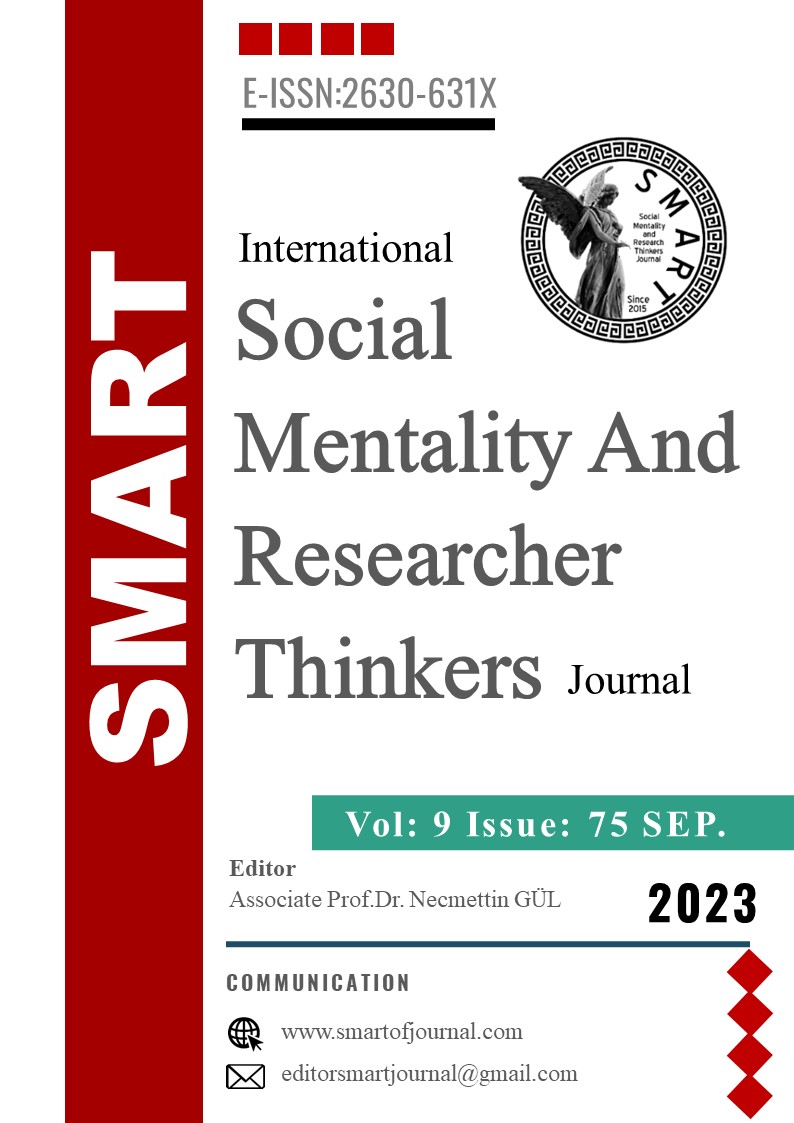Author :
Abstract
Enstalasyon, sanatın geleneksel sınırlarını zorlayan ve genellikle bir mekânın içinde veya dışında, izleyicinin etkileşimde bulunabileceği, deneyimleyebileceği ve düşünebileceği üç boyutlu sanatsal yapıtlardır. Enstalasyonlar, genellikle heykel, resim, ışık, ses, video ve sonsuz malzeme seçeneğiyle birlikte birçok farklı ögeleri bir arada kullanarak çeşitli sanatsal unsurları bünyesinde barındırmaktadırlar. Bu farklı öğeler arasında yer alan cam ise, enstalasyon sanatında hassas ve özgün bir ifade özgürlüğü sunmaktadır. Çünkü cam, ortam kavramını en iyi yansıtan bir malzemedir ve sanat alanında da diğer malzemelere göre daha güçlü bir kimliğe ve ifade kapasitesine sahiptir.
Bu makale, cam malzemenin enstalasyon sanatında nasıl bir sanat eserine dönüştüğünü ele almaktadır. Camın soyut ve somut özeliklerinin yanında güçlü ifade kabiliyetinin enstalasyona kazandırdığı anlam ve etkiyi ortaya koymayı amaçlamıştır. Ancak cam alanında eser üreten sanatçıların enstalasyon kavramına yönelik yaklaşımlarının ve bu yaklaşımları ele alan akademik yazılı kaynakların da yetersiz kaldığı görülmüştür. Bu nedenle çalışmada, cam sanat alanına özgün ve kavramsal bir bakış açısı getiren ve konuyu daha geniş bir perspektifle ele alan yeni bir kaynak oluşturulması hedeflenmiştir. Çalışma kapsamında ele alınan cam malzeme ile yapılan örnek enstalasyon çalışmalarının da cam eser üretiminde ifade olanaklarına katkı sağlayacaktır.
Çalışmanın ilk bölümünde enstalasyonun kısa bir gelişim süreci ile birlikte farklı alanlardan enstalasyon çalışmalarına değinilmiş, ikinci bölümünde ise cam malzeme ile yapılan örnek enstalasyon çalışmalarına yer verilmiştir.
Keywords
Abstract
Installations are three-dimensional artistic works that push the traditional boundaries of art and are usually inside or outside a space, where the viewer can interact, experience and think. Installations usually incorporate various artistic elements by using many different elements together with sculpture, painting, light, sound, video and infinite material options. Glass, which is among these different elements, offers a sensitive and original freedom of expression in installation art. Because glass is a material that best reflects the concept of environment and has a stronger identity and expression capacity in the field of art than other materials.
This article deals with how glass material is transformed into a work of art in installation art. It aims to reveal the meaning and effect that the strong expressive ability of glass, as well as its abstract and concrete properties, brings to the installation. However, it has been observed that the approaches of artists producing works in the field of glass towards the concept of installation and academic written sources addressing these approaches are insufficient. For this reason, the study aims to create a new source that brings an original and conceptual perspective to the field of glass art and addresses the subject from a broader perspective. The sample installation works made with glass material discussed within the scope of the study will also contribute to the possibilities of expression in the production of glass artefacts.
In the first part of the study, a short development process of the installation and installation works from different fields are mentioned, and in the second part, sample installation works made with glass materials are included.





